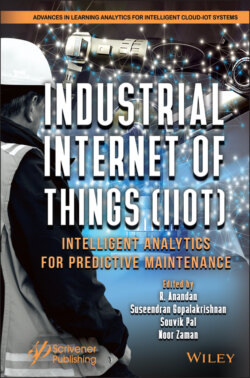Читать книгу Industrial Internet of Things (IIoT) - Группа авторов - Страница 57
2.6.5 Google Cloud IoT (GC IoT)
ОглавлениеGC IoT is a stage for perceptive IoT administrations that supervises information circulation, information handling, and IoT devices assumed over the globe. It warranties safe associations with components. Customer employs the REST application interfaces to reach stage’s assets and backing “MQTT and HTTP” agreement. To anticipate associations with maleficent devices, it operates on “JWT (JSON web token)” in form of a system verifying components. This methodology can restrict consequences on a solitary gadget instead of manipulating complete gadget.
Also, this technology bolsters “RSA and ECC cryptography” computations that have solid mark key size. Details are encoded with “AES-128 or AES-256”, but lesser information necessitating confirmation is applied in “CBC with AES and HMAC”. Likewise, duplicated artifacts are run in CTR with HMAC and AES. Another characteristics such as “PKI and OAuth”, where PKI innovation is functional to warrant information respectability along with validation and OAuth innovation developing access related tokens are useful to validate customers.
In general, the complications and the level of IoT require enacting novel, all-inclusive tactic to IoT security, where safety is approached in practical way and threats are handled in a mountable and consistent manner. The IoT expertise of current day is too complicated and unsettling for security as against insecurely-assimilated solutions. But, security needs be profoundly rooted in each stage of production round, ranging from products designing to development and then deployment. Very often, safety inclines to be an addendum in growth, and though there may be exceptions, in most cases absence of risks awareness lead to businesses pushing IoT devices without regard for safety to market.
Hence, the perception of safety-by-design must be a major driving factor in futuristic IoT security led researches. It is an attitude that has been conventionally practical to software as well as hardware creation. It looks for making systems free of susceptibilities and resistant to attacks as probable before the system is truly on the rampage to market. It is normally attained by measures like broad testing and adopting best of practices in software design. The security through designing models is in contrast with less vigorous techniques inclusive of security via obscureness, minority, and obsolescence. Precisely, it brings about are solution-oriented security models focusing on knowledge on what the IoT applications must perform rather than that the attackers perform.
Equally from other technical arenas, attaining security via design in IoT is suggestively thought-provoking, assuming that the network measure and diversity of IoT units. So, we require an applied yet inclusive and operative framework that may aid motivating implementation of security with design ideologies in the quick-paced, changing IoT background. Hence, there is need for novel framework wherein security is considered as a control issue of an IoT self-motivated system.
Every IoT system needs maintenance to be ahead of emerging safety risks. The below features as well as actions are aid in preventing future exposures.
1 Ethical hacking: Industries can be ahead of up-to-date hacking systems by recurrently testing systems with security academics and setting possible vulnerabilities when they evolve.
2 Reviews of firmware applications: Security authorities can cleanse application faults during firmware advancement, averting lethal application errors at a client level.
3 Mechanisms for security updates: Security procedures alter and improvise through time, permitting quicker firmware deployments for every device at the same time increases security.
The actual challenges for clients are the cost of identifying devices they create with exclusive IDs, addresses of MAC, keys, and then certificates, on production front or at the time of ground deployment. Nearly technical resolutions on personalization most often offer an extra toolset having provision to the greatest level of security at no added cost.
The enterprise-oriented architectures and safety measures have amended for wired computers to entirely wireless gadgets but same is not with connected components. These days, concerns look forward to linking to several devices via secure public as well as private network segments.
